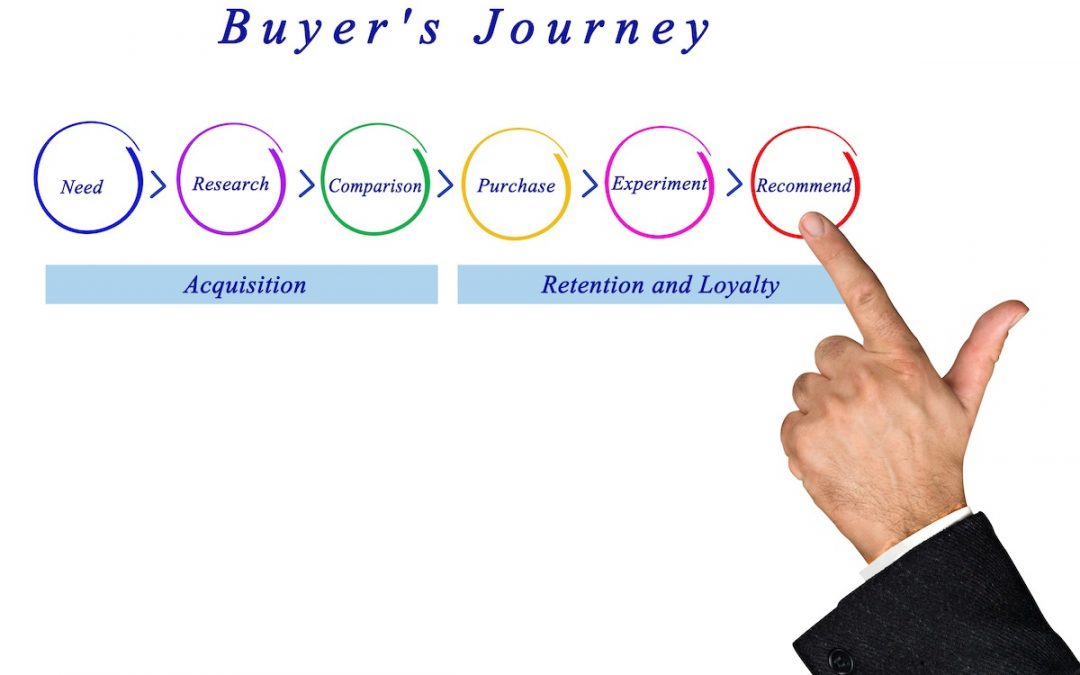
by Marianna Muscat | Feb 27, 2020 | Ecommerce
The web design for your e-commerce website must be optimally designed to automate sales, collect funds online and, most important of all, be easy for your customers to navigate. A successful e-commerce business owner also needs to track some key performance indicators (KPIs). Below, we discuss three of the key performance indicators.
What Are Your Sales?
The first indicator is pretty obvious – sales:
Track Your Sales
Sales and customer growth are always the most important indicators of health for a business. Every business tracks sales on an hourly, daily, weekly, monthly and/or quarterly basis. You also want to track your sales by promotions and channels so that you know which acquisition efforts are working, where they are working and when they are working. This will help you to spend your ad dollars more effectively.
What Is the Average Sale?
You also want to track your average sale on a customer’s first, second and third purchase. Knowing this will give you insights at how purchasing changes over time, such as whether it increases or decreases after the first sale, so that you can develop strategies to improve growth.
Who Are Your High-Profit Clients?
Profit per order is something else you want to track. It’s important to understand who your high-profit clients are and where they come from.
Who Are Your Retained Customers?
The next thing you need to track is the retention rate, with a ‘retained customer’ being described as one who has purchased from you three or more times. Your e-commerce business’ retention rate is important because it helps you understand how customers feel about your brand and whether they will become advocates or not.
Retained customers are your most profitable customers. A great example is from Zappos: 70% of the company’s sales come from retained customers, in other words – those who have made shopping at Zappos a habit.
Get the Best E-Commerce Website Designed for Your Specific Needs and Goals
Web design, SEO and content marketing are all tools that can help you improve the KPIs of your e-commerce business. Contact the experts for more advice today.

by Francois Muscat | Oct 18, 2019 | Ecommerce
Would you actually purchase something through the Instagram app? In March 2019, Instagram launched the checkout feature, which lets users checkout within the app.
Instagram has opened a whole new revenue stream for e-commerce sites. Instead of directing your followers to your website with “link in bio”, they can complete the purchase as soon as something catches their eye.
The checkout system is built into the app, which means that users can store their payment information. If a product is checkout-enabled, then an Instagram user will see the option to “checkout on Instagram”. If they tap to view more details and fill out their contact, shipping and payment information, the user can order through the app as well as check the status of their delivery within the app. The information that a user will see includes the estimated delivery date, tracking number, cancel order, initiate a return or request support from the brand.
Currently, only select e-commerce platforms have the feature. Some brands who are using it include Nike and cosmetic companies. The company is currently only selecting companies from America to try out the feature, so the rest of us will have to wait until there is a wider roll out.
Instagram has positioned the checkout feature as follows:
“Checkout enhances the shopping experience by making the purchase simple, convenient and secure. People no longer have to navigate to the browser when they want to buy. And with their protected payment information in one place, they can shop their favorite brands without needing to log in and enter their information multiple times.”
This will undoubtedly change the way e-commerce companies market their products online.
For more information about giving your digital marketing strategy an overhaul, contact WSI OMS today.

by Francois Muscat | Oct 16, 2019 | Content Marketing, Ecommerce
As a content marketer, you have a dual purpose. Yes, of course! You want to create original, attention-grabbing, well-written, quality content! But, you also want that content to serve the aims of your business. Your content needs to sell.
That sounds simple enough. But, how well is your content serving your sales really? How well have you strategised it towards that end? One way to guide your hand, and to ensure that content is geared towards sales, is to work to match content to the buyer’s journey. Let the content speak to the journey at all its stages. Let’s make this clearer by taking you through the journey and briefly looking at how your content can move with the customer.
• First Signpost: Offering Solutions for Specific Problems
At this stage, potential customers are aware they have a need or a problem, and they need fulfilment or a solution. Perhaps they Google something like “affordable water purifiers,” for example. You, as a producer of competitively priced water purifiers, match them up with content that provides an answer to that need. You’ve met them at the first stage, you have their click, now you need to move them to the next stage.
• Second Signpost: Why Your Solution?
Now the customer has found your water purifiers, but he/she wants to know why yours is better than anyone else’s. Your content should be filled with ready answers to that question so that, whether they follow internal links on your website or search Google for comparisons, you can provide the information they need to assess your value offering.
• Third Signpost: Sealing the Deal
Your first and second signposts should have answered the initial questions satisfactorily. The customer knows that you are a better choice compared to your competitors. They’re ready to buy. All you have to do is make sure that your content, design and UX all guide them easily towards that final checkout.
• Fourth Signpost: Following Up
Start off with an email confirming the purchase and thanking the customer. Then follow up with whatever is necessary to add even more value. Do you offer free delivery? Are there products that can be added on to your water purifier? How can customers contact you for after-sale service? All of this information needs to go in your website copy and/or in your emails.
WSI OMS can help you to create excellent, SEO-beating, high-converting content. Contact us for help with your website copy, blogs, social media and more.

by Marianna Muscat | Sep 12, 2019 | Ecommerce
So you’ve finally set up your business, you have your stock ready to roll, you know your product from back to front and you may even have a great website getting plenty of traffic. Now you’re ready to take that big next step – setting up an e-commerce platform so you can finally see the fruits of your marketing efforts and start shifting that stock. It’s quite an easy process, provided you follow a few simple guidelines. Here are the main tips you should bear in mind before you invite customers to fill their shopping carts:
• Keep It Simple
This is one we tell everybody, all the time, in connection with all aspects of online business. Customers want simplicity and ease of use. Whatever platform you’re using to develop your e-commerce site, always make sure your focus is on the simplest possible accessibility and usability. That means simple processes, which include clear navigation and easy-to-follow prompts.
• Be Upfront About Costs
Imagine being a customer and placing your order for an item you’ve just found and which is exactly what you wanted, at an unexpectedly reasonable price. You follow the checkout process all the way to the end, only to find that the shipping is going to multiply the purchase total by three. What would you do?
Never allow hidden costs at any point of your customer interface. Be upfront about additional fees from the get-go. It’s advisable to state shipping costs on the product page, so the customer knows exactly what they’re spending before they click the check-out button.
• Fuel Demand Through Scarcity
CLEARANCE SALE! ONE-TIME-ONLY OFFER! ONLY ONE LEFT IN STOCK! Don’t underestimate the power of phrases like this. They draw attention to specific products and create a sense of urgency in the client to complete the transaction. The perception of scarcity can turn a casual browser into an instant buyer.
• Provide Wide-Ranging, Specific Filters
You must enable your customers to browse for exactly what they want. They are not going to browse through thousands of items to find what they’re after; they’ll simply look elsewhere. Create dropdown filters with categories and subcategories that will allow customers to narrow down their search in seconds. This can make or break numerous sales.
• Make Good Use of Testimonials and Social Media
Potential buyers who are uncertain of a purchase will always find good testimonials useful. They read reviews at the tipping point of their shopping experience. It’s that moment when they could just walk away or pull out their credit cards. Provide space for reviews and encourage customers who have already bought certain items to write testimonials. You should also encourage links to social media, allowing customers to share product pages with their friends and followers.
WSI OMS is a well-established expert in web design. Contact us for help to create an e-commerce platform that keeps the sales coming.

by Marelise da Silva | Jul 13, 2019 | Ecommerce
If you are selling products online, then Facebook ads should be a part of your marketing arsenal. The way that Facebook allows you to market based on demographics, interests and virtually any other criteria, combined with the low cost of marketing, makes this a must-have for people selling online.
What most people get wrong when creating Facebook ads for their e-commerce sites is that they do their marketing based on their product instead of their potential customer. When targeting people on Facebook, you need to think about the following:
- What problem is the product solving?
- Who will the end user of the product be?
- Why do they have this problem?
Strategies to Consider:
Once you have carefully considered how your product can solve a potential customer’s problem and drafted your ads, you can move onto Facebook ad strategies, here you can learn what is social media marketing and how to work it on facebook, by our friends at Salesforce.
One way to increase your sales with Facebook ads is by using Dynamic Product Ads. In the same way that Amazon remarkets to you based on your activity on their website, Dynamic Product Ads also let you remarket to people who have visited your site.
Another tactic that works well for online retailers is Facebook’s Multi Product Ads, which lets you show multiple products in a single advertisement. The more relevant products a Facebook user sees, the greater your chances of a sale are.
- Install a Conversion Tracking Pixel
The last tip is to install a conversion tracking pixel on your checkout page. This enables Facebook to track who is visiting your site, what they are doing or buying on your site, and generate lookalike audiences for future Facebook ad campaigns.
These are only some of the fascinating ways that Facebook ads can be used for e-commerce marketing. For help with your digital marketing strategy, contact WSI OMS today.

by Marianna Muscat | Apr 17, 2019 | Ecommerce
It is estimated that there are 18.43 million eCommerce users in South Africa, but what are these people’s online behaviours, expectations, and preferences? How can you tailor your e-commerce digital marketing, content marketing, social media marketing, and website design strategies to meet their unique needs and wants? We hope that the following statistics can help with that…
Page Loading Speed
Studies have found that slower page loading speeds, even those delayed by a mere second, can result in 7% fewer conversions. Reduce loading speeds (you should be aiming for a maximum loading time of three seconds) by paying close attention to the file size of the images you use in your website design.
Less isn’t More
It would seem that the number of landing pages you have on your website has a dramatic impact on the number of conversions you generate. Research has shown that companies with more than 40 landing pages saw 12 times more leads than companies with five or less.
Mobile Matters
When it comes to e-commerce, it is all about mobile marketing and ensuring that your website is 100% mobile-friendly. This year, mobile e-commerce sales are expected to make up more than 63.5% of all e-commerce sales.
Streamline Your Checkout Process
A complicated, long-winded checkout process results in the loss of copious amounts of business. For example, 35% of transactions are lost when websites require shoppers to create accounts before making a payment.
Retargeting is Wise
Worried that spending money on retargeting isn’t worth it? Relax. Our sources say that three out of four users notice retargeting ads and that people are 70% zamore likely to convert when retargeted with display ads.
Need help with improving your digital marketing efforts and optimising your e-commerce website? WSI OMS is here to lend a hand. As leading specialists in content marketing, mobile marketing, social media marketing, website design, and website development, you can count on us to boost your online visibility and reputation in a flash. Contact us today to learn more.







